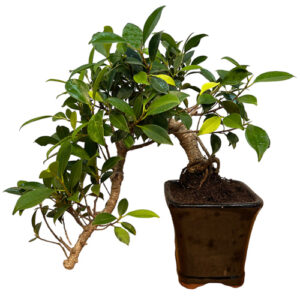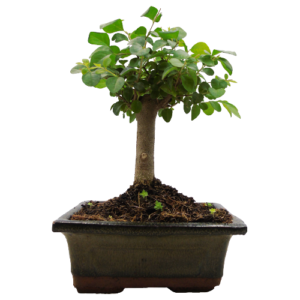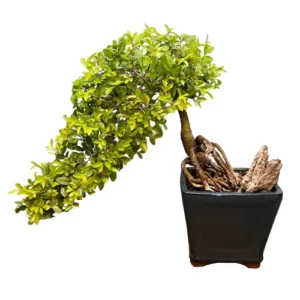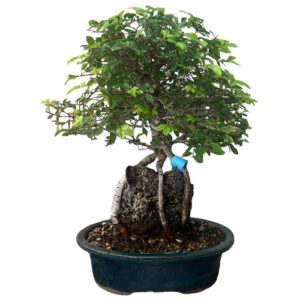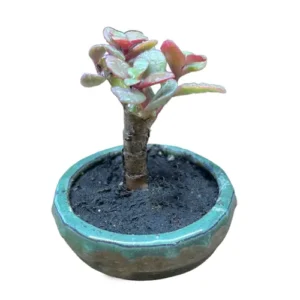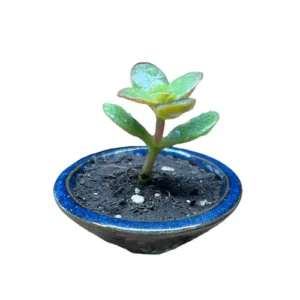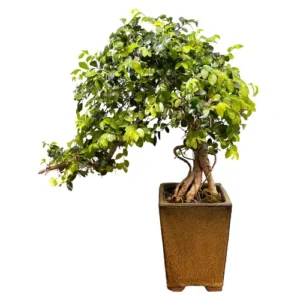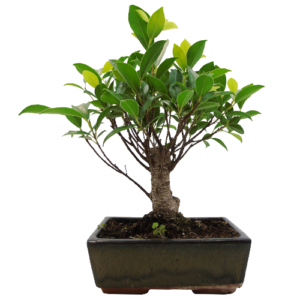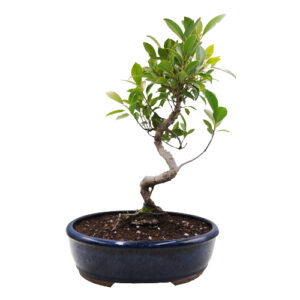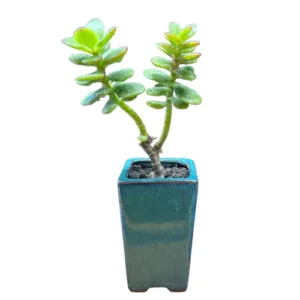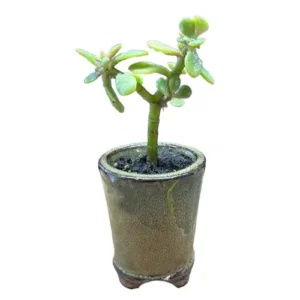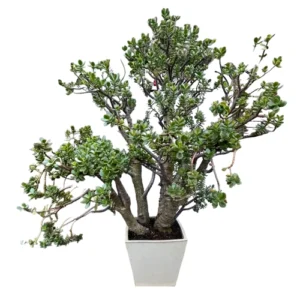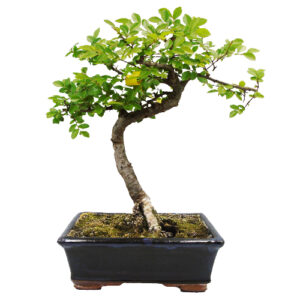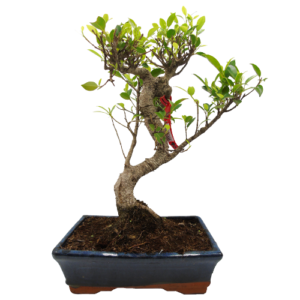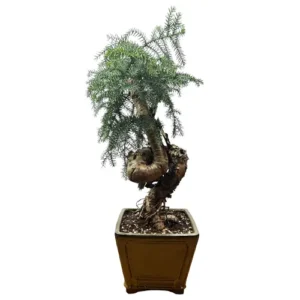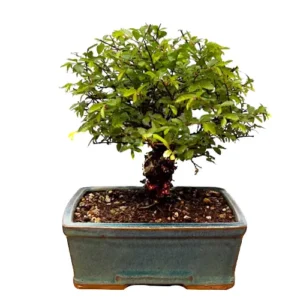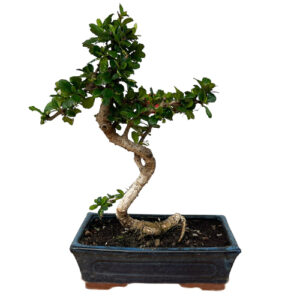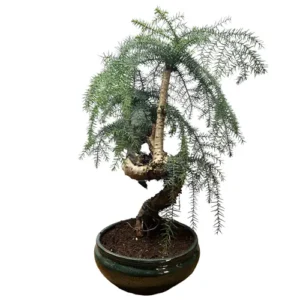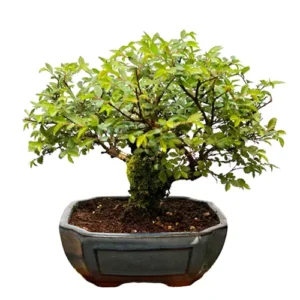Wrightia religiosa
Water Jasmine Bonsai
Native to Malaysia, China and Southeast Asia. Sometimes known as the ‘Water Plum’, this stunning plant is blessed with pendulous bright flowers and a breathtaking fragrance. Due to its light bark offsetting the foliage and flourishing growth, Water Jasmine has become a popular choice for Bonsai.
Water Jasmine Bonsai - Care Tips
Placement
Water Jasmine demands heat and appreciates full sun. It will require temperatures above 18 degrees C. As a plant to be cultivated in the UK, it’s advised this species be kept indoors and given its full requirements with grow lights as and when necessary.
Watering
Water Jasmine is a relatively thirsty plant and should be watered the moment the top inch of the soil layer starts to dry. A careful watering regime is vital to the plant’s growth, it can suffer from overwatering and it can also suffer from drying out entirely.
Feeding & Fertilising
This bonsai responds well to a balanced solid organic feed monthly across the growing season. Alternatively, a liquid feed can be applied on a weekly basis across the growing season. This species can be fed less with liquid feed in the winter when the growth has slowed.
Pruning & Wiring
Pruning larger branches can start in Spring. Afterward back budding is suitable. Constantly trim the new shoots down to one leaf pair as this bonsai grows vigorously.
Young branches are suitable for wiring with some vigilance. Due to how fast this species grows taking off the wire before its wire digs into the bark is important. We recommend using wires with a thickness that matches the thickness of the branch: if the wire you choose is too thick you will damage the bark. If it is too thin, it won’t be effective.
Repotting
Due to how powerfully the roots of a Water Jasmine grow its worth checking this plant yearly. On average this species can be repotted every two years during the summer. Take on a substantial root pruning, if this bonsai gets root bound enough it will have problems getting enough water to the rootball. The older a Water Jasmine is the more likely it will be in need of frequent repotting.
Trees that are ready for repotting will require root pruning, a suitable new pot and appropriate soil mix.
When repotting, do not cut back the root mass by a large amount, and choose a well-draining soil mix that has a neutral or slightly higher PH value of 5-6 but not over 7. We tend to use a mixture of different speciality bonsai soils on our trees. Every species is different so please contact us for free soil-mix advice or to take advantage of our repotting service.
Bonsai make for a one-of-a-kind indoor plant offering elegance, nature and art all in one minute form. Across an array of exquisite and erudite species, they all demand their own specific care and cultivation needs in order for their beauty to flourish. We have an extensive library of care guides for indoor bonsai trees so you can make an informed and considered choice. It’s not about selecting the perfect bonsai, it’s about selecting the perfect bonsai for you.
Water Jasmine Bonsai - Typical Queries
How to propagate a Water Jasmine bonsai?
Water Jasmine bonsai can be propagated through three methods, seeds, cuttings and air layering. Propagation through cuttings is likely the best method with either root or branch cuttings. A six-inch cutting will do, place with root hormone and add perlite. In 30 days roots will develop.
Do Water Jasmine bonsai get pests and diseases?
Water Jasmine can be affected by mealybugs scale and aphids. An appropriate insecticide will handle these. You may also witness yellow leaves if the tree is underfed or overwatered.
Can you keep a Water Jasmine bonsai outdoors?
This is entirely dependent on the environment the Water Jasmine is being grown in. For a climate that consistently provides 18 degrees C and above warmth, growing a Water Jasmine outdoors is ideal. However, for a temperate climate like the UK’s, they are best kept indoors to provide this.

